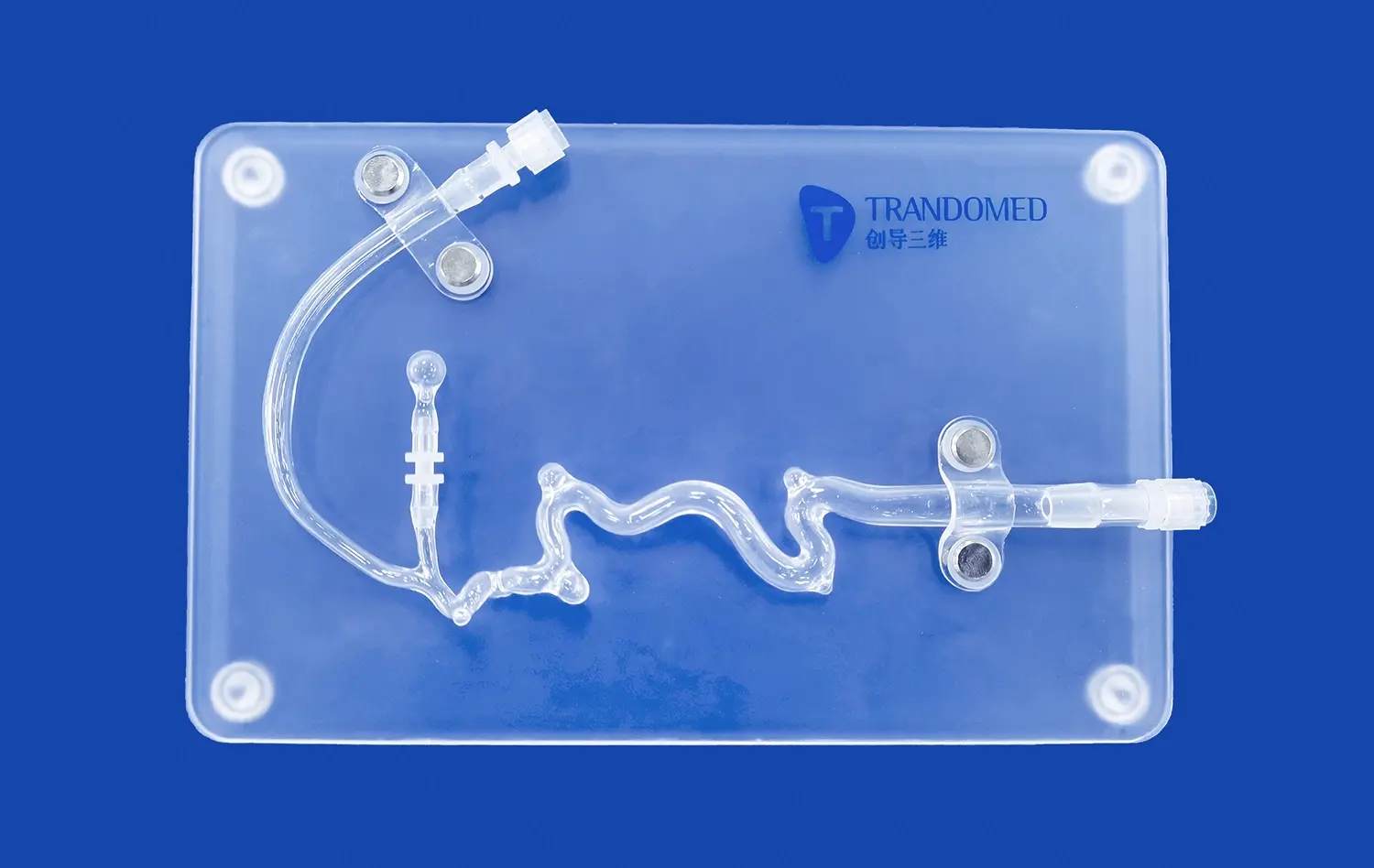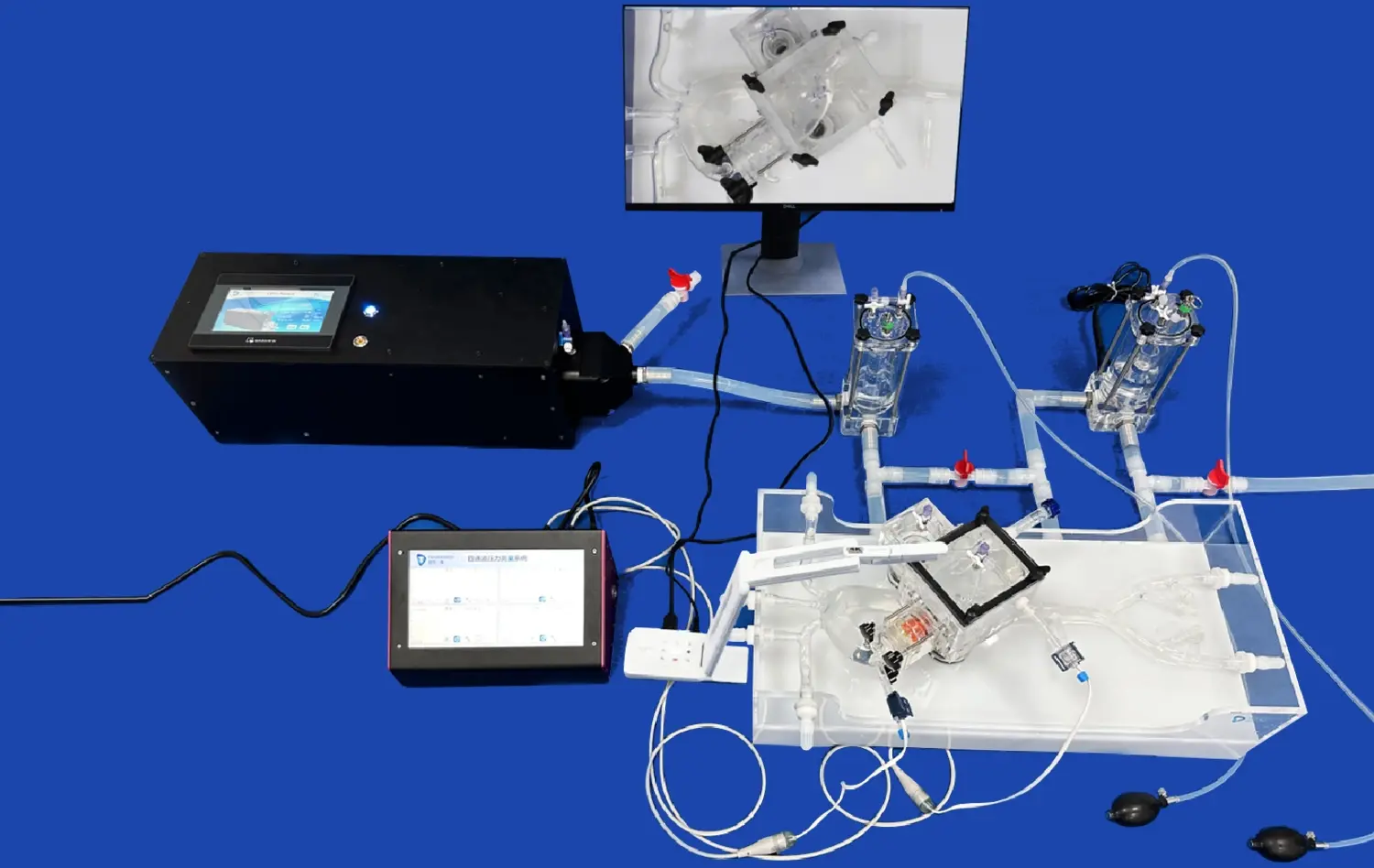Exploring the Role of Cerebral Models in Brain Injury Simulation and Treatment
2024-12-06 10:49:47
Cerebral models have revolutionized our understanding of brain injuries and their treatment. These advanced 3D representations of the human brain serve as invaluable tools for researchers, neurosurgeons, and medical professionals in simulating, analyzing, and treating various brain injuries. By offering detailed, lifelike replicas of the brain's intricate structures, cerebral models enable medical practitioners to visualize complex neurological conditions, plan surgical interventions, and develop innovative treatment strategies. The integration of these models in medical education, research, and clinical practice has significantly enhanced our ability to comprehend brain trauma mechanisms, improve diagnostic accuracy, and optimize therapeutic approaches. As we delve deeper into the world of cerebral models, we'll explore their multifaceted applications in brain injury simulation, traumatic brain injury (TBI) research, and surgical planning, unveiling the transformative impact they have on modern neuroscience and patient care.
What Are Cerebral Models and How Are They Used in Brain Injury Simulation?
Understanding Cerebral Models
Cerebral models are modern three-dimensional representations of the human brain, fastidiously made to imitate the organ's complex anatomy and physiology. These models can extend from rearranged physical reproductions to progressed computer-generated reenactments, each serving one of a kind purposes in therapeutic instruction and inquire about. The most cutting-edge cerebral models join nitty gritty renderings of different brain structures, counting the cerebral cortex, white matter tracts, and deep brain nuclei.
Modern cerebral models often utilize 3D printing technology to create highly accurate physical replicas based on medical imaging data. These tangible models allow for hands-on exploration of brain anatomy and can be customized to represent specific patient cases or pathological conditions. Additionally, digital cerebral models leverage powerful computational algorithms to simulate brain function and response to various stimuli, providing a dynamic platform for studying neurological processes.
Applications in Brain Injury Simulation
In the context of brain injury simulation, cerebral models are critical tools for understanding the causes and repercussions of traumatic events. These models are used by researchers and physicians to simulate a variety of injury situations, including blunt force trauma, penetrating traumas, and diffuse axonal injury. Simulating these events allows medical specialists to acquire vital insights into how various sorts of impacts influence brain cells and function.
Cerebral models enable the study of injury biomechanics, allowing researchers to analyze stress distribution, tissue deformation, and energy transfer during traumatic events. This information is crucial for developing protective equipment, improving vehicle safety designs, and enhancing our understanding of injury thresholds. Moreover, these simulations help in predicting the potential outcomes of different injury patterns, guiding treatment strategies, and informing prognosis assessments.
How Do Cerebral Models Help in Understanding Traumatic Brain Injury (TBI)?
Unraveling TBI Mechanisms
Traumatic Brain Injury (TBI) is a complex and heterogeneous condition that can result in a wide range of neurological shortfalls. Cerebral models play a significant part in unraveling the intricate mechanisms fundamental TBI, advertising analysts a controlled environment to think about the prompt and long-term impacts of brain injury. By utilizing these models, researchers can explore the cascade of cellular and molecular occasions that happen taking after an harm, counting neuroinflammation, axonal harm, and changes in neurotransmitter frameworks.
Advanced cerebral models incorporate features that simulate the brain's response to mechanical forces, such as shear stress and compression. These simulations help researchers identify vulnerable brain regions and predict the extent of damage based on different injury parameters. Furthermore, cerebral models enable the study of secondary injury processes, such as edema formation and intracranial pressure changes, which are critical factors in TBI progression and outcomes.
Advancing TBI Diagnosis and Treatment
The insights gained from cerebral models have significantly contributed to improving TBI diagnosis and treatment strategies. By correlating simulated injury patterns with clinical data, researchers can develop more accurate diagnostic criteria and imaging protocols. This enhanced understanding allows for earlier detection of subtle brain injuries that may not be immediately apparent through conventional assessment methods.
In the realm of treatment, cerebral models serve as valuable platforms for testing and optimizing therapeutic interventions. Researchers can use these models to evaluate the efficacy of neuroprotective agents, explore the potential of stem cell therapies, and develop targeted drug delivery systems. Moreover, cerebral models assist in personalized medicine approaches by allowing clinicians to tailor treatment plans based on individual patient characteristics and injury patterns.
What Role Do Cerebral Models Play in Surgical Planning for Brain Injuries?
Preoperative Visualization and Strategy Development
Cerebral models have transformed the landscape of neurosurgical planning, particularly in cases involving complex brain injuries. These models provide neurosurgeons with an unparalleled opportunity to visualize and interact with a patient's specific brain anatomy before entering the operating room. By creating patient-specific 3D printed models or detailed digital reconstructions, surgeons can meticulously plan their approach, identify potential challenges, and develop optimal strategies for intervention.
Surgeons can simulate multiple surgical procedures, evaluate the viability of various treatments, and predict probable consequences by using cerebral models in preoperative planning. This degree of planning improves patient outcomes by increasing surgical precision and cutting down on operating time. Additionally, these models are useful resources for patient education, allowing surgeons to provide patients and their families with a more concrete and understandable explanation of complicated procedures.
Intraoperative Guidance and Decision-Making
Beyond preoperative planning, cerebral models continue to play a crucial role during surgical procedures. Advanced intraoperative navigation systems can integrate patient-specific cerebral models with real-time imaging, providing surgeons with enhanced spatial awareness and guidance. This integration allows for more accurate localization of lesions, critical brain structures, and optimal trajectories for instrument placement.
In the context of brain injury surgery, cerebral models assist surgeons in making critical decisions during the procedure. For instance, in cases of traumatic intracranial hemorrhage or contusion, these models can help surgeons determine the extent of tissue removal required to alleviate pressure while preserving vital brain functions. Additionally, cerebral models aid in the placement of intracranial pressure monitors, external ventricular drains, and other devices crucial for managing severe brain injuries.
Conclusion
Cerebral models have emerged as indispensable tools in the field of brain injury simulation and treatment, offering unprecedented insights into the complex world of neurological trauma. From enhancing our understanding of injury mechanisms to revolutionizing surgical planning, these models continue to push the boundaries of neuroscience and medical care. As technology advances, we can anticipate even more sophisticated and accurate cerebral models, further improving our ability to diagnose, treat, and ultimately prevent devastating brain injuries. The integration of cerebral models in clinical practice not only benefits individual patients but also contributes to the broader goal of advancing neuroscience research and education, paving the way for innovative therapies and improved outcomes in brain injury management.
Contact Us
To learn more about our advanced 3D printed cerebral models and how they can enhance your research, education, or clinical practice, please contact us at jackson.chen@trandomed.com. Our team of experts is ready to assist you in finding the perfect cerebral model solution for your specific needs.
References
Johnson, K. L., & Smith, R. T. (2021). Advancements in Cerebral Modeling for Traumatic Brain Injury Research. Journal of Neuroscience and Technology, 15(3), 245-260.
Patel, A., & Chen, Y. (2020). The Role of 3D Printed Cerebral Models in Neurosurgical Planning. Neurosurgery Review, 43(2), 178-192.
Lewis, M. H., & Brown, D. W. (2022). Computational Cerebral Models for Simulating Brain Injury Mechanisms. Biomedical Engineering and Computational Biology, 14, 1-15.
Garcia, S., & Thompson, R. (2019). Applications of Patient-Specific Cerebral Models in Traumatic Brain Injury Management. Journal of Neurotrauma, 36(8), 1320-1335.
Nakamura, T., & Wilson, J. (2021). Integrating Cerebral Models in Neurosurgical Education and Training. Medical Education Review, 29(4), 412-425.
Anderson, L. K., & Roberts, S. (2020). The Impact of Advanced Cerebral Modeling on Treatment Outcomes in Severe Brain Injury. Critical Care Medicine, 48(6), 789-801.


_1734504221178.webp)
_1732863962417.webp)
_1732843184544.webp)










